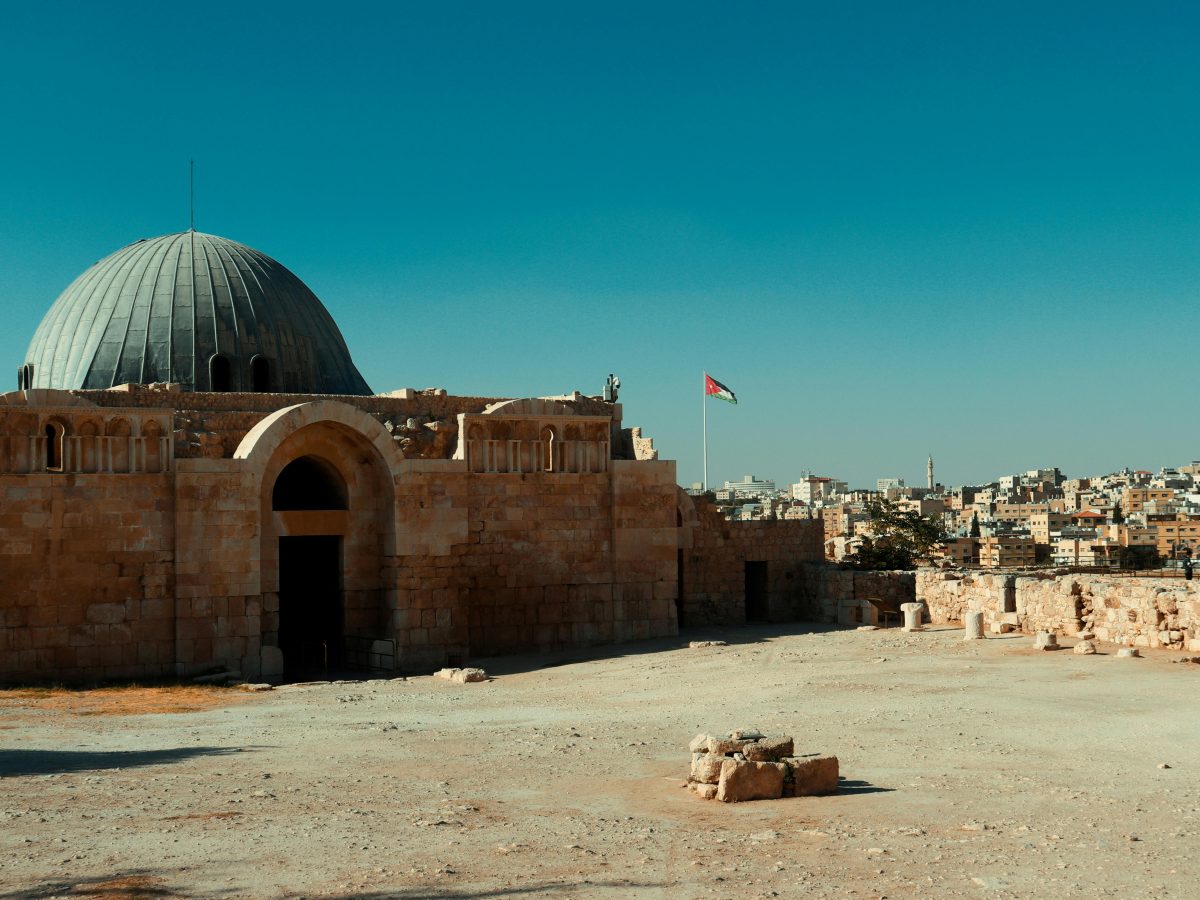Amman, the capital of Jordan, is a fascinating city of contrasts, a unique blend of old and new, ideally situated on a hilly area between the desert and the fertile Jordan Valley.
In the commercial heart of the city, ultra-modern buildings, hotels, restaurants, art galleries and boutiques rub shoulders comfortably with traditional coffee shops and artisans workshops. There is evidence of the city’s much older past everywhere you turn.
Due to the city’s modern-day prosperity and temperate climate, almost half of Jordan’s population is concentrated in the Amman area. The residential suburbs consist of mainly tree-lined streets and avenues flanked by elegant, almost uniformly white houses.
The downtown area is much older and more traditional with smaller businesses producing and selling everything from intricate gold and silver jewelry to everyday household items.
The city offers it’s visitors plenty of lively nightlife, with everything from cultural and theatrical events to traditional Arabic entertainment, modern restaurants and clubs. No more than a four hour drive from anywhere in the country, Amman is also a perfect base for delving deep into Jordan and the various landscapes it provides.
The Citadel is a good place to begin a tour of the archaeological cites of the city. It is the site of ancient Rabbath-Amman, and excavations there have revealed numerous Roman, Byzantine and early Islamic remains. Located on a mountain, it not only gives visitors a perspective of the city’s incredible history, but also provides stunning views of the entire area.

The Citadel Hill of Amman, known locally as Jabal al-Qal’a, is one of the city’s most prominent historical sites, offering a sweeping view of downtown Amman. This ancient site has been continuously inhabited for thousands of years, with evidence of occupation dating back to the Bronze Age. The Citadel is home to significant ruins, including the impressive Temple of Hercules and the Umayyad Palace complex, which are testaments to its historical and cultural importance. Visitors can also explore the Jordan Archaeological Museum, located within the Citadel, housing artifacts from Jordan’s various archaeological sites. The blend of Roman, Byzantine, and Islamic architectural influences makes the Citadel Hill a captivating destination for history buffs and tourists alike.
The Umayyad Palace, located at the Citadel Hill of Amman, is a captivating ruin from the early Islamic period, showcasing the grandeur of Umayyad architecture. The palace complex, constructed during the 8th century, is believed to have served as an administrative and residential headquarters for the Umayyad caliphs. One of the palace’s most striking features is its monumental gateway, which leads to a sprawling courtyard and audience hall, adorned with exceptional stonework and artistic details. Today, the site offers a fascinating glimpse into the past, with its grand dome, semi-collapsed but still impressive, and intricate Islamic art motifs. Visitors can explore the remnants of this once-magnificent palace, enjoy stunning views of Amman, and delve into the rich history of the region. The Umayyad Palace is a significant attraction for those interested in the history and development of Islamic architecture.


The King Hussein Mosque, located in downtown Amman, is a relatively recent but significant addition to the city’s religious and cultural landscape. Built in 2006, this mosque is named after Jordan’s late King Hussein and stands out for its modern design infused with traditional Islamic architectural elements. It features expansive prayer halls and intricate Islamic calligraphy, providing visitors with a sense of contemporary Jordanian spiritual life. The mosque is not only a place of worship but also a community center, actively engaged in educational and cultural activities. It serves as a symbol of modern Islamic values and Jordanian heritage, making it an interesting site for tourists interested in the intersection of new and old Islamic culture.
What to see
Accommodation
Amman has many 4 and 5 star hotels, with gourmet restaurants, coffee shops and boutiques. All the top hotels offer well-equipped conference and meeting facilities, fitness centers, spas and swimming pools.
For those on a more modest budget, there are numerous small hotels ranging from 1 to 3 star ranks, especially in the downtown area.
Dining
Amman is a large cosmopolitan city and offers an extensive range of restaurants serving popular international cuisines.
Dining is available for just about everything from American to Yemeni and everything else in between. However, visitors are highly encouraged to try local food. There is a variety of delicious traditional restaurants to choose from, many of which also provide live entertainment. Coffee shops, both traditional and modern, are popular meeting places and seem to appear on almost every street.

